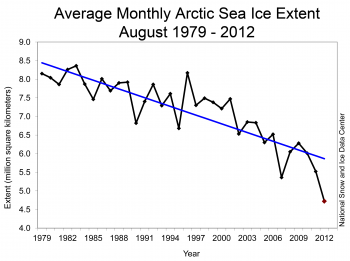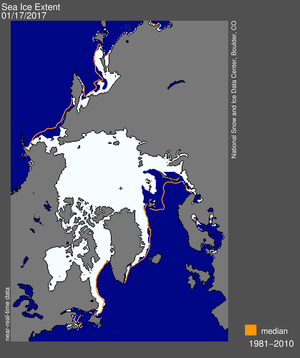The National Snow and Ice Data Center has just released the arctic sea ice numbers for August, and as expected, the news is not good. Compared to the satellite record for previous Augusts, this year has broken all records.
http://nsidc.org/arcticseaicenews/

Of course, after breaking the previous record, 2007, on 24 Aug, the melting in the Arctic has not bottomed out yet. Traditionally, lowest ice in the N Polar Ocean occurs in mid-September, although it seems to be coming later every year now, and we still have a ways to go yet. You will note these are not statisical outliers, or marginal results, these are clear and obvious trends and the results are, to put it mildly, dramatic.
Sea ice minima are roughly half what they were just 30 years ago. There are 4 million square km more of dark ocean exposed to sunlight than there were three decades ago.
http://www.ijis.iarc.uaf.edu/en/home/seaice_extent.htm

The orange line is the median ice extent for 4 Sept for the last decades of the 20th century. Think of it as how much summer ice was lost in just the last 12 years.

Next month’s numbers should be very interesting. Stay tuned.